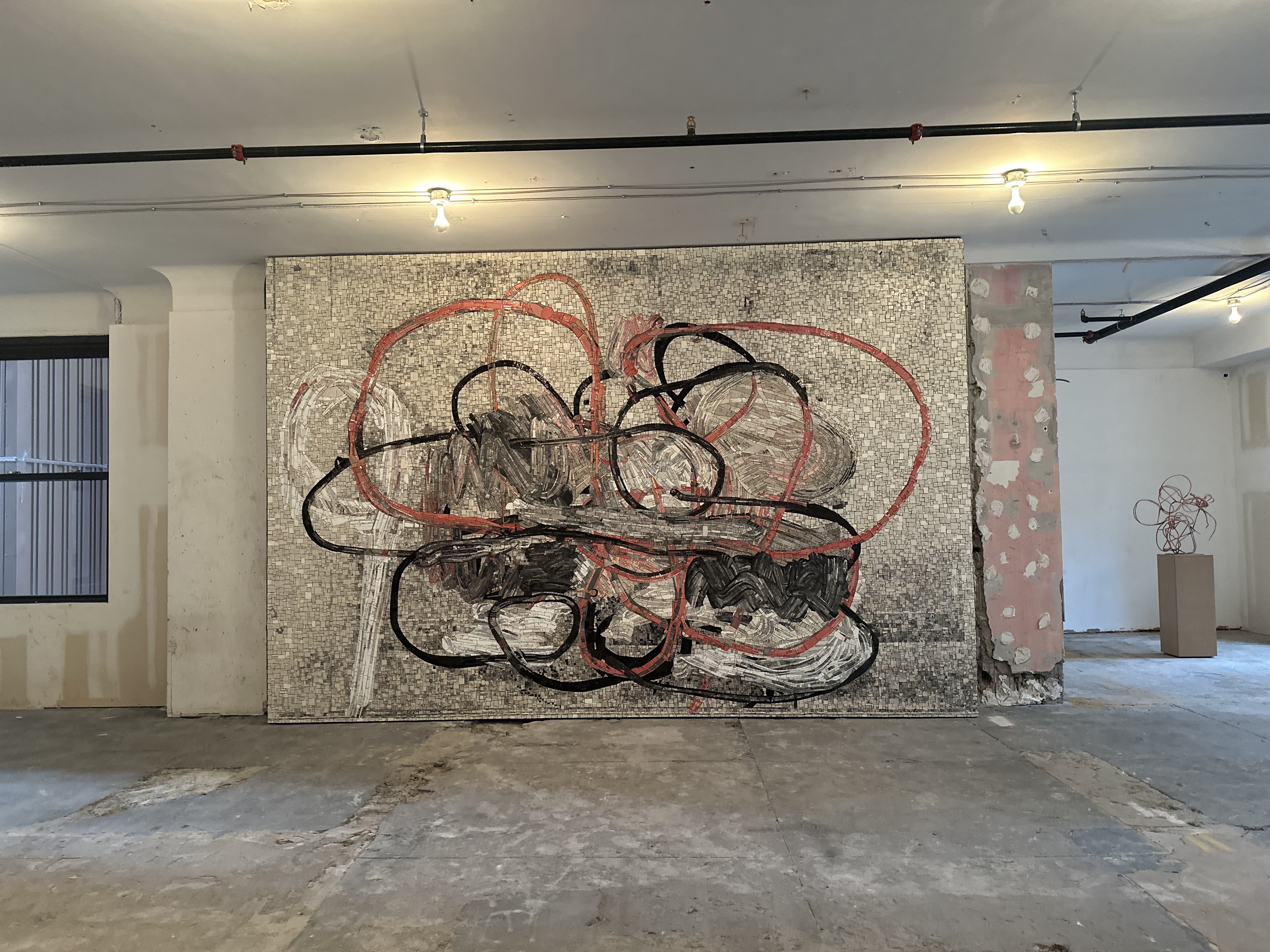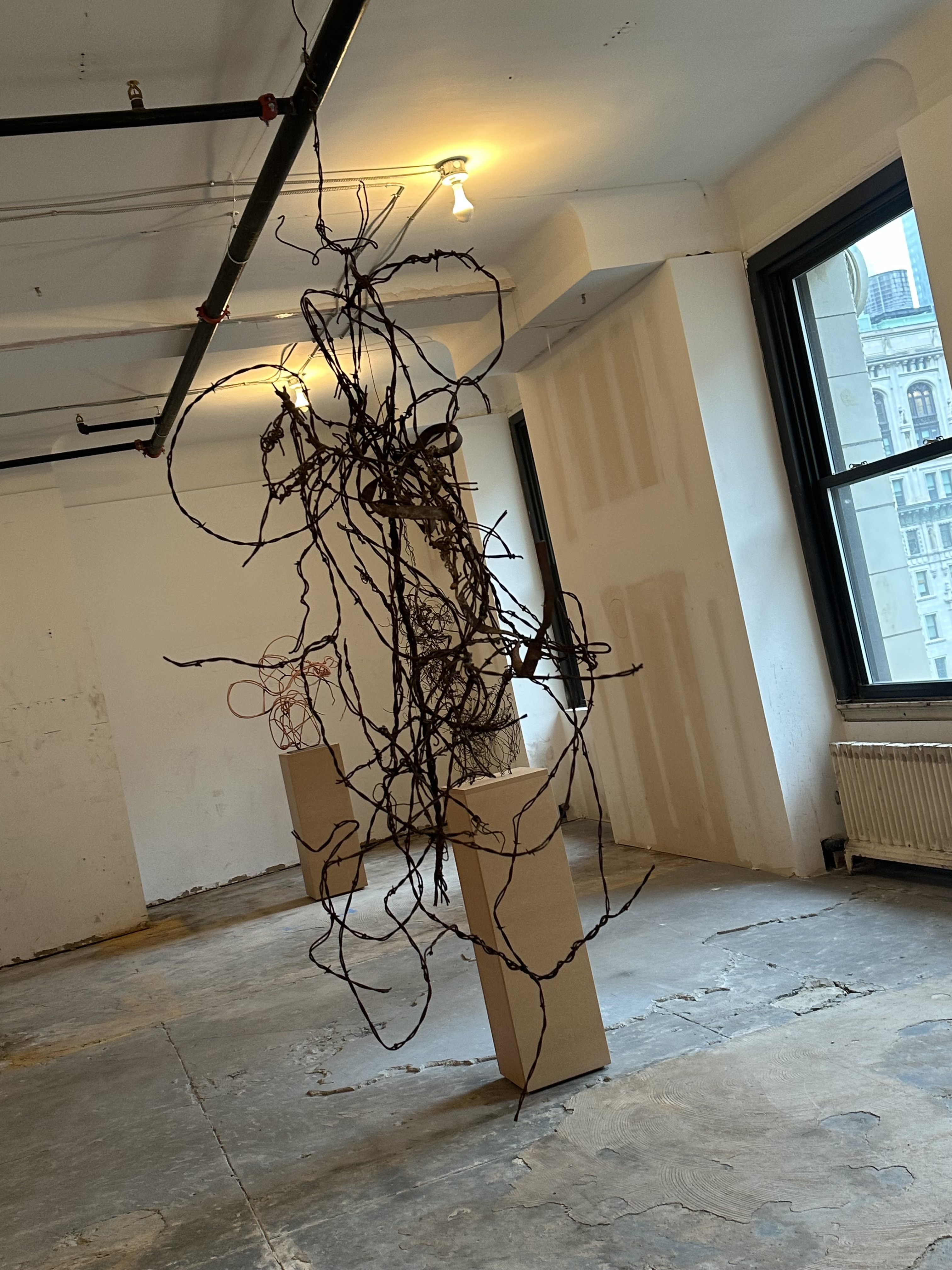Back From the Undead
Christopher Wool at 101 Greenwich St, New York
March 14 – July 28, 2024
It was difficult to extricate “See Stop Run” from the narrative surrounding it. To those familiar, this was undoubtedly a comeback show, Wool’s first major survey since the artist’s 2013–14 Guggenheim retrospective — independently organized and not for sale, a pure reminder of who the painter of postmodern life once had been . Yet less often mentioned was the underlying reason for the artist’s absence throughout the preceding decade: the great “Zombie Formalist” crash of late 2015 and its attendant, calamitous effect on Wool’s commercial standing. A sort of Manet to the Impressionists, Wool often figured as a forebearer to overnight market stars such as Wade Guyton, Adam Pendleton, and Jeff Elrod, all cool purveyors of “process-based” or “post-gestural” abstraction. And with their sudden demise came his own precipitous decline. By 2021, the artist’s auction sales had plummeted 85 percent from their mid-2010s peak. Now Wool was back from his extended stay in Marfa, Texas, carrying with him the good news.
Resurrection formed a background refrain for the exhibition, staged, as it was, in an abandoned office space — stripped and gutted, yet primed for renovation. It was also expressly personal in tenor, as evinced by the hanging of photographs drawn from the series Incident on 9th Street (1997), each depicting the charred remains of his old East Village studio. The message behind the inclusion of these works was clear, if a little funny: Wool had been here before, standing in the wake of catastrophe, whether brought on by flagging sales figures or a ruinous fire.
The lingering question was whether this was all a clever ploy to reemerge from the depths of Gagosian’s roster or constituted a more generative return to artistic production. Despite the occasional inclusion of past works, the exhibition mostly centered around Wool’s recent activities, encompassing not only painting but photography, sculpture, and an errant mosaic. Mostly executed over the past six years and almost invariably composed of gestural brushwork in muted pinks, black, and greige, posited against partial photo-scans of other compositions, silkscreened or printed onto the canvas, the paintings did not appear particularly new. Novel, however, was their contextualization within a transdisciplinary project, one which appeared to emphasize process over product. The churning, doubled-over signature, the jittering Gordian knot that has long foregrounded many of Wool’s canvasses, sometimes compared to a graffiti tag or a viral infection, served here, instead, as a metaphor for the convulsively cycling, non-sequential method from which they emerged.

Notably, one elucidation of this process largely unfolded off-canvas: a series of sculptures, derived from bundles of fencing wire, culled from Wool’s property in Marfa. Some were presented on plinths as found objects, while others were expanded in space and suspended from the ceiling, like mobiles of corroded electrical wiring. Others still were submitted to a procedure of 3D scanning and silicone casting; the resulting copper-plated bronze sculptures finally bore the appearance of Wool’s distinctive scrawl, a tangle of haywire production. If we weren’t already convinced of their relation to painting, there was Bad Rabbit (2018), a series of black-and-white photocopies of the barbed-wire sculptures, which appeared as preparatory sketches for paintings already made.

There were many other objects too: snapshots of a desolate American landscape, indebted to Robert Frank, maybe even Walker Evans, muddling the distinction between a decimated downtown and a Western ghost town; the translation of one emblematic painting into a large subway mosaic, evoking an artistic past funded by the Works Progress Administration of the 1930s. Consider, also, the paintings’ fraught relation to AbEx indexicality or the sculptures’ citation of David Smith’s “drawing in space.” Yet this inventory of references was less an elegy to late modernism and more about a dark comedy of systemic breakdown. “Sell the house, sell the car, sell the kids,” as the artist’s best-known painting reads. A specifically American form of malfunction, whether induced by austerity politics or personal crisis, has long provided Wool with the armature for his abstraction. Here, the framework was plied and expanded, like those bundles of fencing wire, to account for both a lost world of operative artistic activity and a present dominated by the intangible machinations of the market, art and real estate alike. Suspended between collapse and reconstruction, Wool found pleasure in the interregnum. You could hate the show as a testament proffered by a wealthy denizen of the art world’s own Disney Frontierland. But for those of us already invested, “See Stop Run” announced a reconfigured return to form, even a comeback.